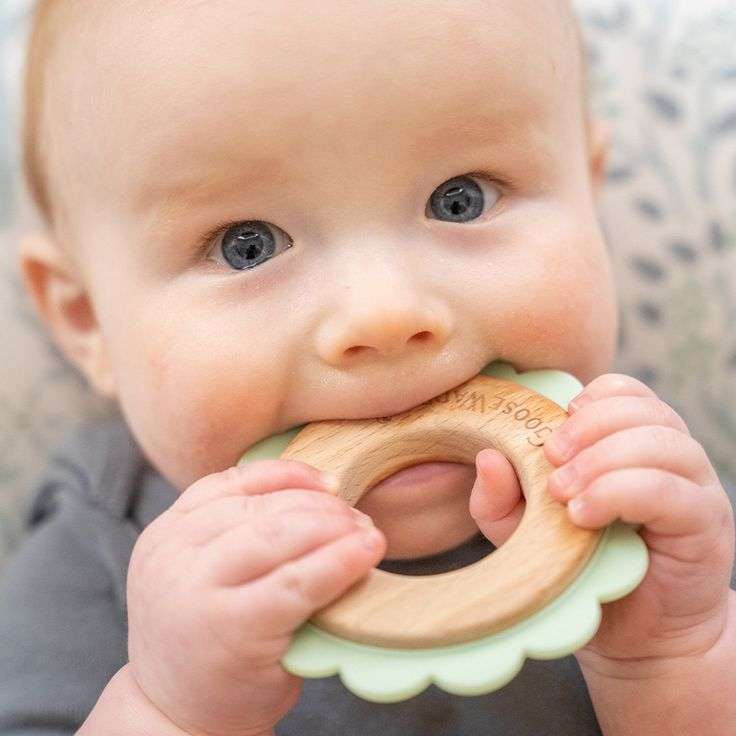Tooth Eruption or Teething in Children
- Dr Owais Rafiq
- August 15, 2024
- 1:42 pm

Teething in Children
Teething in Children is your baby crying more than usual for an unexplained reason or they are getting extra fussy for some days? It is possible to be due to the tooth eruption or teething.
This takes place when their teeth finally break through the gingival tissue into the oral cavity, which in turn, helps in primary functions of biting, chewing and speaking.
Tooth Eruption or teething starts at?
Generally, the process of teething starts from six months onwards with the appearance of the lower central incisors and then slowly goes on until all the primary teeth have been developed by three years of age.
The sequence and timing of tooth eruption can vary among children but most of the time, teeth erupt in children in the following sequence:

| Baby Teeth | Eruption Age Range |
| Central Incisors | 6 to 10 months |
| Lateral Incisors | 9 to 13 months |
| First Molars | 13 to 19 months |
| Canines (Cuspids) | 16 to 23 months |
| Second Molars | 23 to 33 months |
How can I know if it’s Tooth Eruption or Teething?
Your baby who is have tooth eruption or teething cannot speak and communicate freely. Only understanding the signs helps you know the natural teething process. Common indications include
- Excessive drooling
- Swollen gums
- Low-grade fever
- Loose stools
- Vomiting
- Reduced hunger
- Fussiness
- Disrupted sleep
- Tendency to gnaw on objects.
These symptoms are temporary and vary between children.
Easing pain of tooth eruption or teething?
Tooth eruption or teething is sometimes very painful to your baby and causes challenges for you. Your child might get irritable, but the symptoms are temporary. You can soothe them by following the steps:

- Clean your child’s gums regularly with a soft cloth before teeth even erupt.
- Massage the gums gently with clean fingers
- Offer cold teething rings, or cold foods like yogurt or chilled fruits to soothe sore gums
- In case of fever, use over-the-counter fever relievers such as paracetamol syrup.
- Gently brush erupting teeth with a small child-sized, soft-bristled toothbrush using a rice-sized amount of fluoride toothpaste.
- Limit sugary foods and drinks that can lead to tooth decay.
What to avoid during teething?
- tooth gels containing choline salicylate (aspirin), as they can cause Reye’s syndrome in some children (a very dangerous and even fatal condition).
Also, tooth gels might not always be effective in reducing pain of tooth eruption or teething.
Delayed tooth eruption or teething?

Tooth eruption or teething can sometimes take more than usual time in some kids and that is quite normal as it has many factors accounting for the delay.
If the process is delayed for a few weeks longer than usual, don’t worry yourself much because it is a natural thing.
If no teething has started by the time they are 18 months, pay a visit to dentist, especially with following issues in your child
- crowding of teeth
- gum bleeding
- bad mouth odour
American Academy of Pediatric Dentistry recommends the first dental visit for a child whether they have good or bad dental health to be as sooner as around the first birthday. This, in turn, provides a good start for good oral habits and regular teeth eruption checking.
Transition to Permanent Teeth Eruption
As your child’s dental journey continues, the arrival of permanent teeth marks another noteworthy phase. With growth, their primary teeth will gradually pave the way for a set of permanent ones. This transformative process generally commences around the tender age of 5 and extends into the early teenage years. The sequence of permanent tooth eruption unfolds in a discernible pattern:
| Age | Teeth |
| 6-7 years | First molars (upper and lower) |
| 7-8 years | Central incisors (upper and lower) |
| 8-9 years | Lateral incisors (upper and lower) |
| 9-11 years | Canines (upper and lower) |
| 10-12 years | First premolars (upper and lower) |
| 10-12 years | Second molars (upper and lower) |
| 11-13 years | Second premolars (upper and lower) |
| 17-21 years | Third molars, also known as wisdom teeth (upper and lower) |
Dr Owais Rafiq
Subscribe to Dr Owais YouTube channel
For parenting advice, child health, symptoms, causes and treatment of illness in children.





